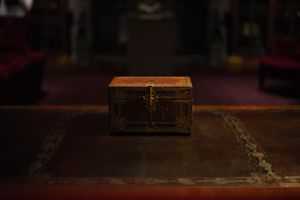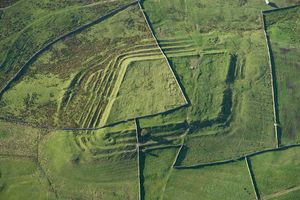Milestones Museum's costumed volunteer David P. Whithorn discusses his archaeological background and how he uses objects and an extensive historical knowledge to help families understand the story of their ancestors.
Part 3
Mapping the ‘Past to the Present’
Using old maps in archaeological studies can often bring rewards that artefacts and excavations on their own cannot. This is true of my own specialism in the Great War. These tragic events took place in real places, which of course are still here - albeit after 100 years of modifications.
The British had extensive mapping capability during the Great War initially using existing French maps enhanced by the rapidly emerging technology of ‘Aerial Photography’, this still used today by modern archaeologists. Now on-line sources such as ‘Google Earth’ have made this process so much simpler and capable of so much more than paper maps could ever hope...
I am often asked to discover the story of a family relative who fought and fell in the Great War. Despite the loss of some records (e.g. 66% of WW1 service records in WW2), it is still quite incredible what can be done to piece an individual’s story together. Surviving medal records, maps (though you do have to understand the contemporary British Army map referencing system!), war diaries, even cemetery records can be used to build up such a story. And what stories, they can be...
Recently (this week!), I have helped an Irish family find their Great-great-uncle who was known to have lost his life with the 1st battalion Royal Dublin Fusiliers (RDF) on 4th September 1918.
He has no known grave; the family have been to Belgium to see his name on the Ploegsteert Memorial to the Missing and laid a wreath for him. Just a name on a wall in a foreign land, nothing more... Where was he killed, in what circumstances, and why has he no grave? Would it be impossible to find out after a century?
4/9/1918, not a well known date in the history of ‘things Great War’. Steadily, from records his story came together, what happened – an attack by the 1stRDF capturing the village of Ploegsteert on the border between Belgium and France – forgotten now. Operation details, battalion diary entries, times and map references. His story came together piece by piece...and thanks to ‘Google Earth’ here is that action in a very special way:

And this, a ‘street view’ image of the location where the 1st RDF were held up at 3am on 4/9/18 - and the battalion suffered most casualties...:

A study of the burial records showed that although half of the 32 fatalities in this attack have no known grave and are commemorated on the nearby Memorial to the Missing (alongside 11,000+ others), half do...Looking at the their distribution, cemetery histories with further map references showed the fallen of the 1st RDF that day had originally been buried together at their starting location that morning. After the war, these bodies had been moved to a ‘concentration’ cemetery some miles away along with 700 other isolated graves and smaller cemeteries from the locality – but they were kept together...Among those identified members of the 1stRDF killed on 4/9/18, are others of the 1st RDF whose bodies could not be identified and are buried as ‘unknowns’.
This Irish family will be returning to France after this COVID19 pandemic, not just to see the name of their relative on the walls of this huge Memorial to the Missing once more. But now, they will drive down the road, park the car and walk in the very footsteps of their relative along this final route he took on 4th September 1918 – knowing the things they see around them, fields, woods, buildings, are the things he saw as well that morning a century ago. Later they will drive to a cemetery, which is not often visited by battlefield tourists, to visit the graves of the fallen of the 1st RDF. Among them, there will those of 1st RDF soldiers without names - but one of them is most likely to be their relative... The wreath they lay at one stone of an ‘unknown’ soldier will be for their relative and his comrades of the 1stRDF...RIP
Archaeology, History and even ‘Living History’ all do play their part for me in the discovery and the preservation of the stories of our more recent and individual ancestors can be rebuilt and retold – for generations to come!
If you have enjoyed Culture on Call and you are able to make a donation, any support you can give will help us keep people connected.



